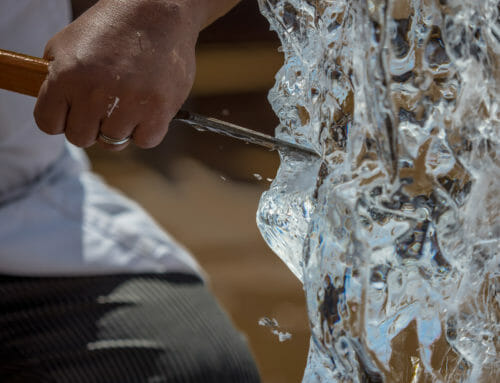In lower elevations of Southern California, seeing real snow would look like a mirage. Nearly every day, our summer-like weather is a far cry from the winter wonderland depicted in movies. California, however, is home to iconic and cinema magic producing Hollywood. Inside the studio, experts create snow flurries, picturesque Christmas landscapes, and white-topped mountains. Creating enclosed snow scenes is essential while making movies, as shooting on location has many unknowns – including the finicky weather.
The magical world of Hollywood has many tricks of the trade to create realistic snow. In the past, however, some techniques have been bizarre, unexpected, and even dangerous.
Here are some wacky ways filmmakers have made artificial snow:
Fluffy and Flammable
Creating fluffy, realistic snow that falls from the sky is no easy feat. For a while, filmmakers made snow using cotton. Pouring out cotton from the ceiling and using fans, cotton floated beautifully and captured the lightness of snow. The texture and color from a distance seemed perfect. However, fire marshals warned filmmakers that having that much flammable material floating around was a huge fire hazard.
Toxic Materials
One of the most iconic films of all time, The Wizard of Oz, had toxic materials used as snow. Dorothy woke up from her nap in the poppy field covered in the stuff. People don’t buy houses when they find this hazardous material. This material is none other than asbestos! Before knowing the horrible effects asbestos had on breathing, filmmakers used this white textured material to have the light snowy effect. They sprinkled asbestos directly on the actors!
Breakfast Cereal
For many years, filmmakers used a staple in breakfast: corn flakes. They painted the flakes white and mixed it with shaved gypsum for a more voluminous effect. The adverse impact of this technique? When the actors would walk across the stage, the crunch under their feet would make too much noise to record dialog! Many times, filmmakers would have to dub dialog over the snow scene.
Still Being Used, But For Something Else
In the movie, Dr. Zhivago and many other feature films, marble dust was used for snow. It’s white powdery substance was perfect for the texture of snow. However, like asbestos, breathing in this dust is bad for the lungs. Though it’s not being used anymore for films, sometimes people use it for art projects and snow for model train sets!
In Our Kitchens
If we look in our kitchen cupboards, we’ll see some perfect ingredients for snow. In a few Charlie Chaplin films they used a mix of salt and flour which looked surprisingly realistic on film, and in 1978’s Superman, they just used simple salt!
These days, creating snow for the movies is much more practical and eco-friendly. Many companies sell recycled paper snow, for instance. Between CGI or ice companies like Crystal Ice creating artificial snow using snow machines, there is no shortage of snow-related options for a movie set; a snow-themed party or a holiday wonderland of your own. Don’t let the summer stop you from enjoying the benefits of snow!







Leave A Comment